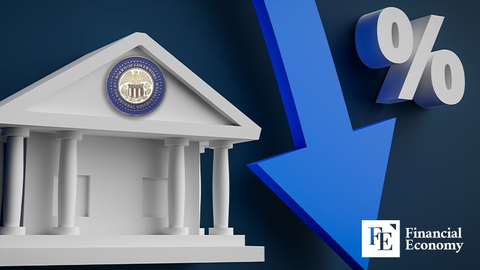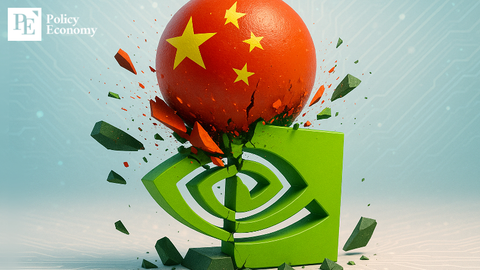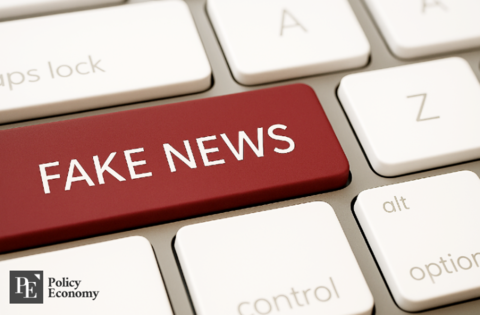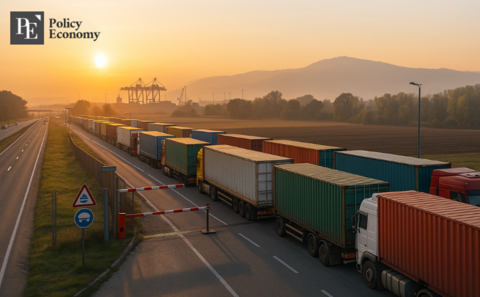The Chaos of Trump’s Tariff Policies: Economic Fallout and Business Struggles
Input
Modified
Unpredictable Trade Strategy: How Businesses Struggle with Shifting Tariffs Retaliation and Global Backlash: The Escalating Trade War Finding Stability: The Need for a Balanced Trade Policy

Unpredictable Trade Strategy: How Businesses Struggle with Shifting Tariffs
In recent years, the global economy has been deeply influenced by the trade wars initiated by former President Donald Trump. His administration's unpredictable approach to trade relations, specifically his use of tariffs, has left businesses and markets in a state of uncertainty. Trump's back-and-forth decisions regarding tariffs, particularly those placed on key trading partners like China, Canada, and Mexico, have been a source of frustration for business owners, investors, and economists alike. These tariffs, designed to address trade imbalances and boost American manufacturing, have instead created a chaotic environment that many argue is detrimental to both businesses and the broader economy.
At the heart of the tariff debate is the fact that businesses, particularly those with international operations, have been caught in the middle of Trump’s erratic trade policies. The inconsistent nature of these policies, where tariffs were both imposed and then rescinded without clear rationale, has made it increasingly difficult for companies to plan for the future. For instance, a business that imports materials from China or exports goods to Mexico faces considerable challenges when the tariff landscape shifts unpredictably.
A small manufacturer in the U.S. who relies on Chinese-made parts to assemble their products might experience a sudden spike in costs due to a new tariff, but they could also see those tariffs lifted without warning, forcing them to reevaluate their pricing strategy and profit margins. This erratic decision-making process disrupts the regular flow of international commerce, causing companies to put off investments, postpone hiring, or seek alternative suppliers. In some cases, these businesses face the difficult decision of either absorbing the higher costs or passing them on to consumers, which could undermine their competitiveness in the market.
Moreover, industries like agriculture, automotive, and technology have been hit particularly hard. The U.S. agricultural sector, for example, has seen a steep decline in exports to countries like China and Mexico due to retaliatory tariffs. Farmers, already facing slim profit margins, have found it increasingly difficult to navigate the unpredictable trade environment. Similarly, the automotive industry, which depends heavily on cross-border supply chains, has experienced price hikes on imported parts, forcing manufacturers to either absorb the costs or raise vehicle prices, which could hurt consumer demand.
The stock market, a key barometer of economic health, has also been highly sensitive to Trump's tariff policies. Every time a new tariff is announced, stock prices of affected companies can fluctuate drastically. These fluctuations not only destabilize markets but also create an atmosphere of anxiety that hampers long-term investment strategies. The uncertainty surrounding future tariff changes can lead to delays in business decisions, as companies are reluctant to make major investments when the economic environment is so volatile.
Despite the clear negative impacts of his tariffs, Trump has consistently deflected responsibility for the economic fallout, often blaming others for the consequences of his policies. In particular, he has frequently attacked "globalists"—a term he uses to refer to politicians, business leaders, and economists who advocate for free trade and international cooperation. Trump argues that these globalists, in their efforts to create a more interconnected global economy, have undermined American interests and allowed countries like China to take advantage of the U.S.
This approach aligns with Trump’s broader populist message, which portrays him as a defender of the American worker and a fighter against the elite forces of globalism. However, critics argue that this simplistic narrative ignores the complex realities of global trade. By framing the issue as a battle between American interests and foreign powers, Trump has created a binary view of trade, where any attempt at compromise or negotiation is seen as a betrayal of American values.
The reality, however, is much more complicated. Businesses that depend on international trade are caught in the middle of these ideological battles, trying to adapt to shifting tariffs while also grappling with the long-term consequences of a fractured global trade system. While some may agree with Trump’s protectionist policies, many others feel that the unpredictability and constant back-and-forth have only added unnecessary costs and risks to their operations.
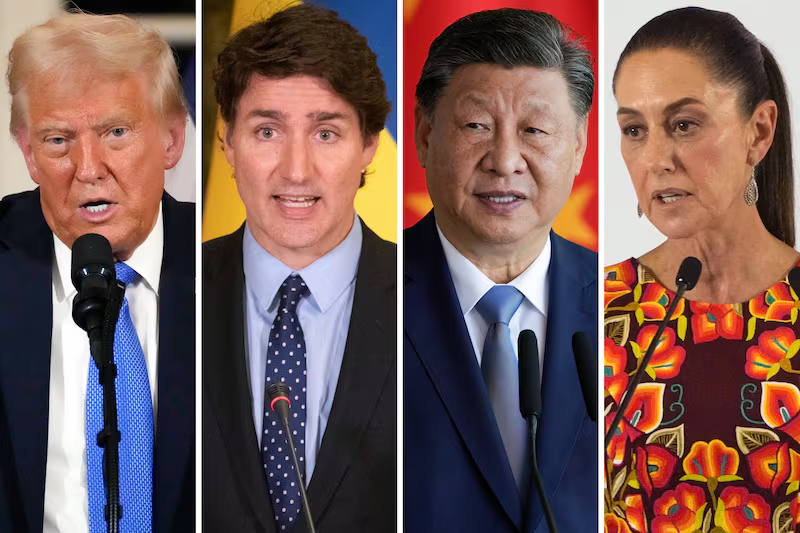
Retaliation and Global Backlash: The Escalating Trade War
As Trump continues to push forward with his tariff policies, retaliation from other countries is becoming an increasingly significant issue. Nations like China, Mexico, and Canada have already imposed tariffs on American goods in response to Trump’s initial trade measures. These retaliatory tariffs have made it more difficult for U.S. businesses to maintain their competitive edge in international markets. Exporters who once relied on easy access to foreign markets are now faced with higher tariffs on their goods, making them less attractive to international buyers.
The situation is further complicated by the fact that Trump’s tariffs have exacerbated global tensions, leading to a broader trade war that has intensified over time. Rather than encouraging foreign governments to come to the negotiating table, Trump’s approach has pushed countries like China to adopt more aggressive tactics in defending their own economic interests. This has resulted in a protracted back-and-forth, where tariffs are slapped on goods with little consideration for the broader consequences.
The trade war’s effects are also starting to spill over into other areas of the economy. The rising cost of goods, especially raw materials, has led to price hikes in industries like construction and manufacturing. For example, steel and aluminum tariffs imposed by Trump have increased the cost of construction materials, raising prices for everything from cars to buildings. The burden of these costs is often passed down to the consumer, leading to inflationary pressures that can harm economic growth.
Additionally, the uncertainty created by these tariff wars has made it difficult for businesses to plan ahead. Companies are unsure whether to invest in new production facilities or hire additional workers when they don’t know what the future holds for tariffs. This lack of clarity is particularly damaging in sectors that require long-term planning, such as the aerospace and automotive industries. The cumulative effect of this uncertainty is a slowdown in business investment, which ultimately hurts the broader economy.
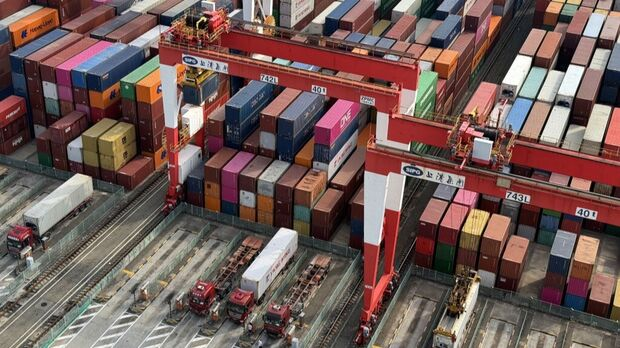
Finding Stability: The Need for a Balanced Trade Policy
While Trump’s tariffs were intended to protect American jobs and industries, their chaotic implementation has caused more harm than good. The key to resolving the current trade dilemmas lies in finding a more stable and predictable approach to trade policy. This would require a shift away from protectionism and a return to multilateral negotiations that can provide a clearer path forward for businesses.
One potential solution is for the U.S. to work more closely with its allies to address issues like intellectual property theft, market access, and unfair trade practices. By collaborating with countries like Canada, the European Union, and Japan, the U.S. can exert greater influence on global trade norms while avoiding the pitfalls of unilateral tariff imposition. At the same time, such an approach would help businesses by providing more consistent and reliable trade rules, allowing them to plan their operations with greater confidence.
The U.S. could also focus on strengthening domestic industries through targeted investment in research and development, infrastructure, and workforce training. By investing in the competitiveness of American industries, the U.S. can reduce its reliance on tariff-based policies and foster long-term growth. This would create a more sustainable economic environment, where businesses can thrive without the constant threat of trade wars and tariff hikes.
Conclusion: A Path Forward for U.S. Trade Policy
In conclusion, Trump’s chaotic tariff policies have created significant challenges for businesses both in the U.S. and abroad. The uncertainty caused by the constant back-and-forth of tariff impositions and rescissions has made it difficult for businesses to navigate international markets. While some of Trump’s goals, such as reducing trade imbalances and protecting American workers, are commendable, his approach has been marked by unpredictability and a disregard for the broader economic consequences.
To move forward, the U.S. must seek a more balanced and stable approach to trade. This involves working with allies, engaging in multilateral negotiations, and investing in domestic industries. By doing so, the U.S. can create a more predictable and supportive environment for businesses, helping to secure long-term economic growth and stability. Only through cooperation, rather than constant conflict, can the U.S. hope to overcome the challenges presented by the modern global economy.


